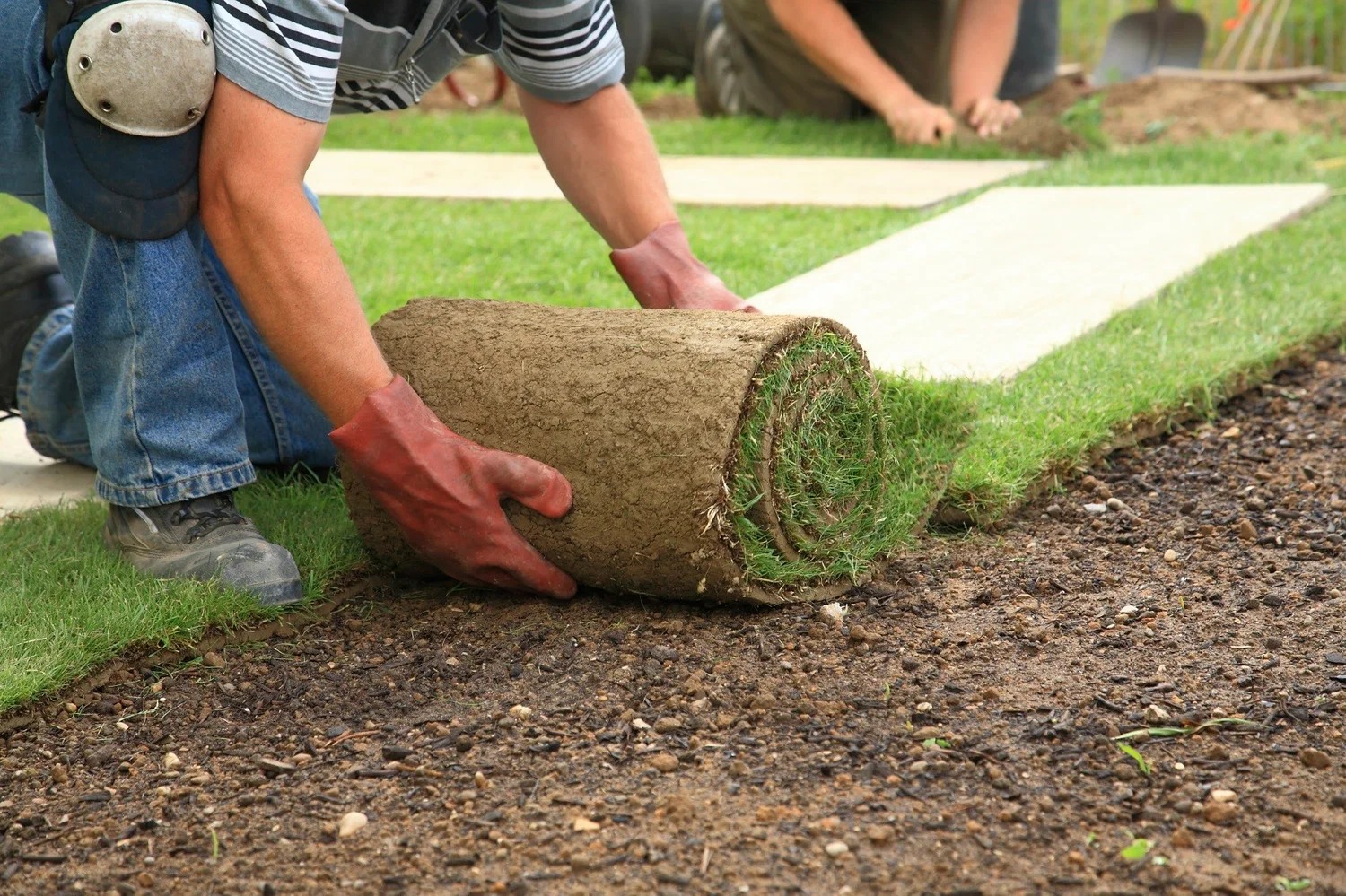Landscape construction is a vital part of designing and creating beautiful, functional outdoor spaces. It involves transforming land and creating elements that improve the appearance, utility, and value of a property. Different types of landscape construction projects cater to various needs and can vary in scale and complexity. Whether for residential, commercial, or public spaces, these projects enhance the natural beauty of outdoor areas while providing sustainable, practical solutions. Understanding the types of landscape construction projects can help property owners make informed decisions about what is best for their space.
Residential Landscape Construction
Residential landscape construction focuses on enhancing private homes and gardens. This type of project can include a variety of elements, such as planting, hardscaping, and irrigation systems. Homeowners may opt for landscape construction projects like patios, walkways, retaining walls, or water features like fountains and ponds. The goal is to create an aesthetically pleasing and functional outdoor living area that complements the home’s design. Residential landscaping can also include creating peaceful garden spaces or adding privacy through fences or hedges.
Commercial Landscape Construction
Commercial landscape construction refers to designing and constructing outdoor spaces for businesses, office complexes, shopping centers, and other commercial properties. These projects often require a larger scale and more durable materials than residential landscapes. Commercial landscapes aim to provide attractive, welcoming spaces for employees, clients, and customers. This can include creating green spaces, outdoor seating areas, parking lot landscaping, and signage. Sustainable landscaping practices, such as water-efficient irrigation and native plantings, are often incorporated into commercial landscape designs.
Hardscaping Projects
Hardscaping is a crucial aspect of landscape construction that involves the installation of non-plant elements in outdoor spaces. These projects include the construction of patios, driveways, walkways, retaining walls, and outdoor kitchens. Hardscaping creates structural features that enhance the overall design and functionality of the landscape. For example, a well-designed patio can serve as an outdoor living space, while retaining walls can help manage soil erosion. Hardscaping adds durability, dimension, and style to a landscape, providing long-lasting features that complement plants and greenery.
Softscaping Projects
Softscaping refers to the living elements of landscape construction, including plants, trees, shrubs, and lawns. This type of project involves the design and installation of vegetation that contributes to the overall beauty and ecosystem of the space. Softscaping can include designing garden beds, planting trees for shade, or creating flower gardens for color. The selection of plants is essential to the success of softscaping, as factors like climate, soil type, and maintenance requirements must be considered. Softscaping brings a vibrant, natural element to landscapes, creating harmony and balance with the hardscaping features.
Sustainable Landscape Construction
Sustainable landscape construction focuses on environmentally friendly practices that minimize the impact of development on the environment. This type of project includes using native plants, installing rain gardens, and implementing water-saving irrigation systems. Sustainable landscapes also promote biodiversity, conserve water, and reduce energy consumption. Green roofs, permeable paving, and solar-powered lighting are examples of sustainable features that can be incorporated into landscape construction. The goal of sustainable landscape construction is to create eco-friendly spaces that are both beautiful and functional while protecting natural resources.
Landscape Lighting Projects
Landscape lighting is an important component of landscape construction that enhances outdoor spaces after dark. This type of project involves the installation of lighting fixtures to illuminate pathways, gardens, and architectural features. Landscape lighting can highlight specific elements, such as trees, water features, or sculptures, creating ambiance and enhancing the property’s curb appeal. Additionally, landscape lighting can improve safety by lighting walkways and driveways. Well-designed lighting can transform a space, adding a dramatic effect while providing functional illumination for outdoor activities.
Water Features and Irrigation Systems
Water features, such as fountains, ponds, waterfalls, and streams, are a popular addition to landscape construction projects. These elements create a tranquil atmosphere and add visual interest to gardens or outdoor spaces. Installing an irrigation system is also an essential part of landscape construction to ensure that plants receive adequate water. Irrigation systems can be customized to meet the specific needs of the landscape, promoting healthy plant growth while conserving water. The combination of water features and efficient irrigation enhances the beauty and functionality of outdoor spaces, making them more enjoyable and sustainable.
Outdoor Living Spaces
Outdoor living spaces have become increasingly popular in landscape construction projects. These spaces are designed to extend the living area of a home into the outdoors, creating functional areas for dining, entertaining, or relaxing. Features like patios, decks, fire pits, and outdoor kitchens are commonly included in these projects. An outdoor living space can be customized with furniture, lighting, and decor to suit the homeowner’s style and needs. This type of landscape construction creates a seamless flow between indoor and outdoor environments, providing a comfortable and inviting space for family and guests.
Commercial Parks and Recreational Spaces
Landscape construction projects for commercial parks and recreational spaces aim to provide public areas for leisure and enjoyment. These projects can involve the creation of parks, sports fields, playgrounds, walking trails, and picnic areas. The focus is on creating spaces that promote physical activity, social interaction, and community engagement. Landscaping elements like benches, lighting, trees, and green spaces enhance the aesthetic value of these public areas while providing a safe and enjoyable environment for visitors. Well-designed parks and recreational spaces can become important community hubs and focal points for urban development.
Urban Landscape Construction
Urban design projects focus on transforming city spaces into livable, green environments. These initiatives often involve redesigning streets, plazas, and public areas to include more greenery, such as trees, gardens, and green roofs. The goal is to improve the quality of life in urban areas by providing residents with access to nature, reducing pollution, and promoting sustainability. These projects may also incorporate public seating, pedestrian pathways, and bicycle lanes to encourage outdoor activities and create a more walkable, vibrant city.
Conclusion:
Designing and building outdoor spaces plays a significant role in enhancing both the functionality and beauty of the environment. From residential gardens to commercial properties and public parks, these projects offer a variety of ways to improve the aesthetic appeal and sustainability of any space. Whether you’re creating a serene garden, an inviting outdoor living area, or a vibrant public park, outdoor design brings together elements of nature and architecture to create lasting, impactful spaces. By investing in these projects, you not only improve the look of your property but also increase its value, functionality, and connection to the natural world.
FAQs
1. What is landscape construction?
Landscape construction refers to the process of designing and building outdoor spaces using a combination of hardscaping (non-living features) and softscaping (plants and greenery).
2. What types of landscape construction projects are common for residential properties?
Common residential landscape construction projects include patios, walkways, garden beds, water features, retaining walls, and outdoor living spaces.
3. How do commercial landscape construction projects differ from residential ones?
Commercial landscape construction projects are typically larger in scale and focus on creating functional, attractive outdoor spaces for businesses, such as parking lot landscaping, outdoor seating areas, and signage.
4. What is sustainable landscape construction?
Sustainable landscape construction involves using eco-friendly practices, such as native plants, water-efficient irrigation, and energy-saving features, to minimize the environmental impact of landscaping projects.
5. Why are water features important in landscape construction?
Water features, such as fountains, ponds, and waterfalls, add beauty, tranquility, and visual interest to outdoor spaces, enhancing the overall landscape design.


